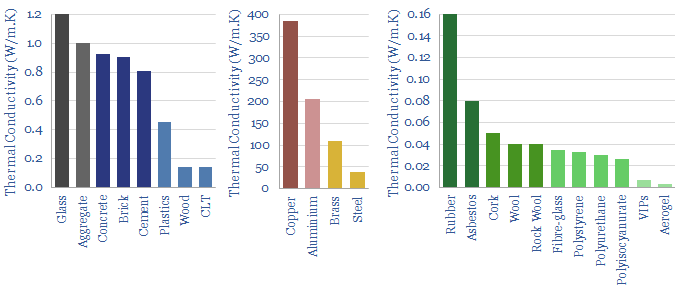Insulating materials can slow the loss of heat from a warm house by a factor of 30-100x. This matters as 60-90% of today’s global housing stock is 30-70% under-insulated. And the world is now grappling with gas shortages, which may encourage policymakers to re-prioritize nearer-term energy savings. We think renovation rates could treble. This 12-page note screens who might benefit.
Shortfalls in the European gas market are discussed on page 2. A 20% improvement in home insulation could free up the equivalent of all pipelines imports from Algeria.
The thermodynamics of home insulation are laid out on pages 3-4, explaining the W/m.K metric, why it matters, and scoring different materials.
The scale of the opportunity is larger than we thought, based on a dozen technical papers, reviewed and summarized on pages 5-6, in order to quantify potential energy and CO2 savings.
CO2 abatement costs will generally be below $100/ton, we calculate, especially amidst energy shortages. Economic assumptions and calculations are on pages 7-9.
Leading companies that produce insulating materials are screened on pages 10-11, in order to identify who might help supply a potential trebling of materials demand.
An interesting nuance, discussed on page 12, is how better insulation would re-shape the cost curve for decarbonizing home heat, in favor of nature-based solutions, gas and hydrogen; but potentially away from heat pumps and other electrification technologies.
